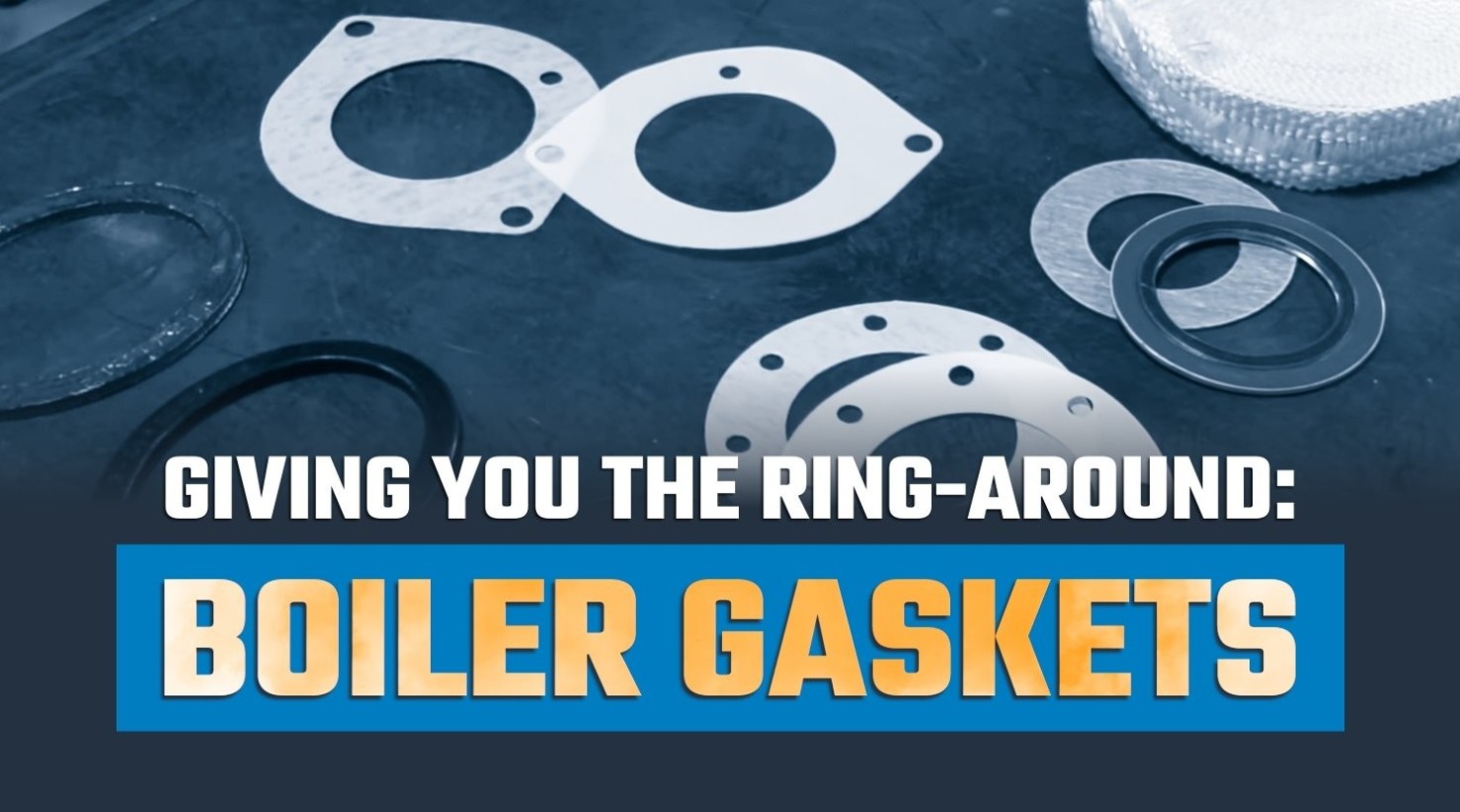You can’t make steam without pressure. At least, not in the boiler world. When you think about it, there are a lot of different pressurized systems that all contribute to a boiler’s operation. First and most obvious, you have the pressure inside the boiler tank where the steam is being made. Everybody knows about that one. But think of the other components that are under pressure, as well.
There’s pressure in your feedwater supply. A lot of it, if you’re using a pump system. There’s pressure in the water line coming in through the utility, and the pressure in your water-softening system. There’s pressure in your incoming gas line, too. On the boiler itself, you have handholes and manways that are subjected to the same pressure as the rest of the tank.
That’s a lot of different places that have to be sealed against leaks, especially when we’re talking about metal-on-metal contact. That’s where gaskets come in.
That’s right. The humble gasket, be it paper, rubber, polymer, metal, or even braided rope, is the unsung hero that holds it all together. But there’s more than one type of gasket. In fact, a lot more. All throughout your boiler system, you’ll find gaskets of different sizes and materials. This is why we can’t stress this next part enough:
IMPORTANT: ALWAYS MAKE SURE YOUR GASKET IS CORRECTLY RATED FOR THE APPLICATION IN WHICH IT WILL BE USED.
Many gaskets look very similar, and many are even the exact same shape. But if you put the wrong kind of gasket in the wrong situation, leaks may be the least of your problems. We’re talking explosions, equipment damage, and major bad news. So again, check your gaskets before you wreck your boiler.
When it comes to the gaskets themselves, they tend to be made of a few specific materials, depending on where they’ll be used.
Non-Asbestos Fiber Gaskets are made of woven or pressed fibers (hence the name), and are found in the lowest-pressure systems.
Neoprene Gaskets are used in lower-pressure systems, including the firetube boilers that are extremely popular in our industry. These gaskets are typically rated below 200 psi of steam pressure.
Polymer Gaskets are rated for mid-range pressures, typically up to 450 psi of steam.
Flexible Metal Gaskets are made of wound and pressed metal, giving them incredible strength and flexibility. They are typically rated for extremely high temperatures and pressures, up to 1000 psi.
Graphite Gaskets are made of, you guessed it, compressed graphite. They’re rated for high temperatures and up to 2000 psi in steam pressure.
For the highest steam pressures, PTFE Joint Sealant is typically used instead of a preformed gasket. This polymer material is tough enough to withstand steam at up to 3000 psi.
ON THE FIRESIDE
Steam, water, and fuel aren’t the only things that need to be tightly sealed inside your boiler. There’s also a tremendous amount of heat hanging around in your fire side. It’s in the flue, it’s in the stack, it’s in the furnace, it’s in the fire tubes, all places that need to retain that heat to turn water into steam. Of course, that heat also needs to be retained so it doesn’t burn any humans in the area, but that’s pretty much understood.
To keep all this heat contained, boilers, doors, and hatches in the fire side have to be sealed off properly with a high-heat material that’s flexible enough to seal uneven surfaces, some of which have to move, but durable enough to withstand thousands of degrees of heat.
That’s where woven fibers come in. Fiberglass and ceramic fibers can be woven into different shapes, including ropes, flat tapes, and blankets, to fill the spaces between surfaces and keep the fire side safe and efficient. You’ll typically find fiberglass used in areas that stay below 1000⁰ F. For higher temperatures, including surfaces exposed to direct flame, woven ceramic is the best choice for the job.
Remember, always use the correct gasket for your application. Unlike a deli, there are no substitutions here. Every gasket has to be rated for the correct temperature and pressure under which it will operate, and it needs to be the correct shape to properly mate the metal surfaces.
If you need a new gasket for your boiler, WARE’s Boiler Warehouse stocks a truly colossal selection of gaskets. We can also custom-order or even custom-cut gaskets based on your exact specs. Whatever your boiler needs, from service to maintenance to inspections, we’re here to help. Just let us know.
